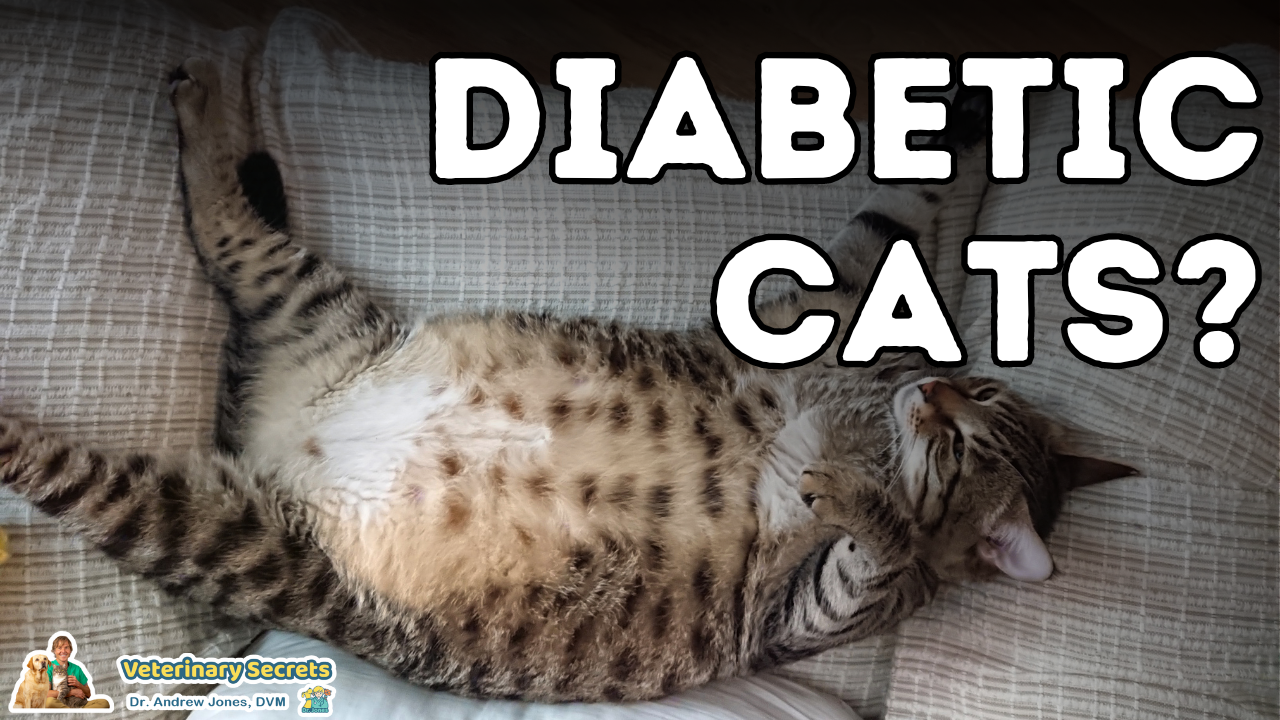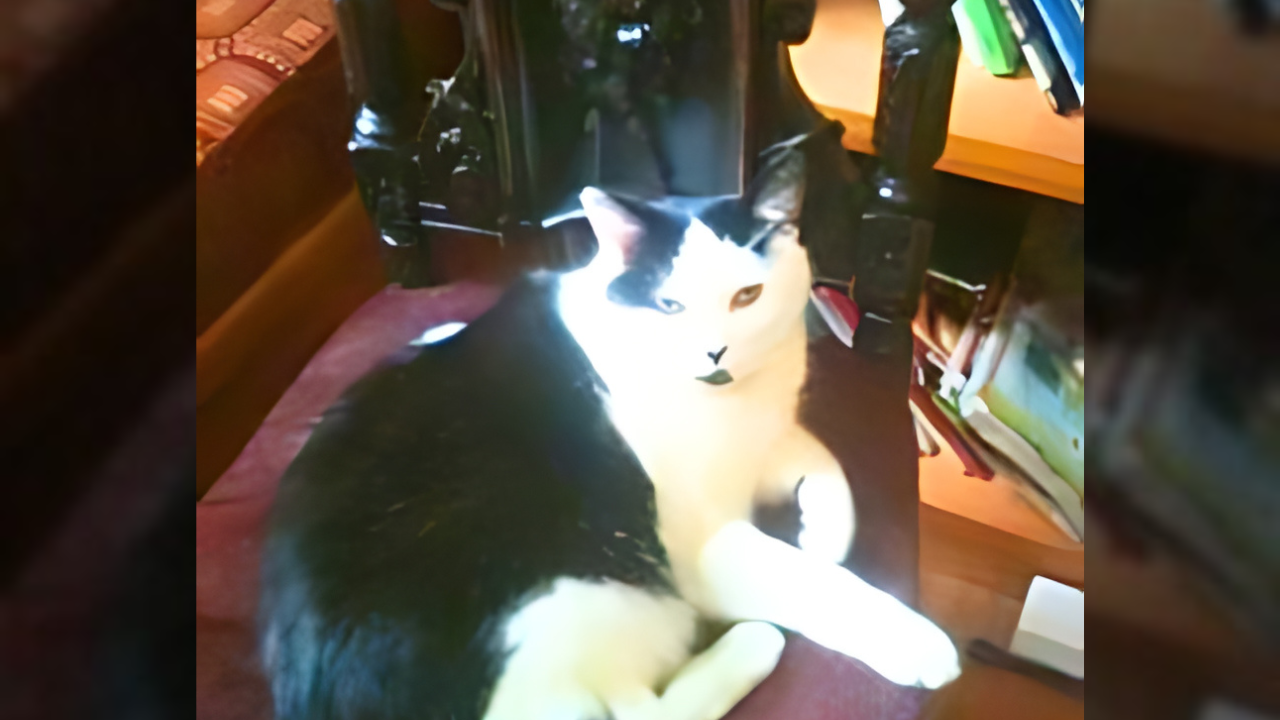How To Treat Cat Diabetes At Home with These Top 5 Holistic Options.

Cat diabetes is increasingly being diagnosed, and currently it affects more than 1 in 400 cats. Diabetes is very treatable, and does not need to shorten your cat’s life span. This article will go over the signs of diabetes in cats, along with the various suspected causes. I will review the most common solutions, focusing on the lesser know natural solutions that you can use to treat your cat for diabetes at home.


Many pet owners first suspect diabetes when their cat exhibits increased thirst and urination. This may also be accompanied by an increased appetite and weight loss. In some cases, noticeable leg weakness or dropping down on the rear legs can occur. A sweet-smelling breath is another potential indicator. If these signs are not identified early, the cat may develop a serious condition called Ketoacidosis, requiring immediate veterinary intervention.
Causes of Cat Diabetes
Diabetes results when the pancreas does not produce enough insulin to regulate blood glucose levels effectively, leading to elevated blood sugar. This can cause the symptoms mentioned above. Genetic predisposition and obesity are significant risk factors. Cats that consume high carbohydrate, dry cat food are especially at risk.
Initial Steps and Veterinary Care
If you suspect your cat has diabetes, it’s crucial to have this confirmed by a veterinarian. Treatment typically begins with insulin, which might be reduced with dietary adjustments. Inquire about using Glargine (brand name Lantus) Insulin, which is longer-acting and effective for cats that are difficult to regulate. Insulin injections are administered at home at consistent times. Your veterinarian will guide you on the proper administration techniques, types of insulin, dosages, and frequency.
Managing Hypoglycemia
Be vigilant for signs of low blood sugar, which can occur within an hour after an insulin injection. Symptoms include weakness, trembling, dazed behavior, and possibly seizures. If this occurs, immediately administer a sugar boost using corn or maple syrup (1-2 tablespoons), applying it to the gums if necessary, and then seek veterinary care.
Dietary Changes
Recent studies advocate for a high protein, low carbohydrate diet, mimicking what cats naturally consume in the wild. Switching to canned food with less than 5% carbohydrate content is crucial. Recommended brands include Wellness Chicken or Turkey, Fancy Feast Chunky Chicken or Turkey, and Nature’s Variety Organic. This dietary adjustment often requires reducing insulin dosages to prevent hypoglycemia.
Supplements and Antioxidants
Consider adding supplements to enhance your cat’s glucose regulation. Chromium (25 mg per 10 lbs of body weight daily) can increase cellular uptake of glucose. Antioxidants like Vitamin E (100 IU per 10 lbs twice daily) and Vitamin C (100 mg per 10 lbs twice daily) help limit damage to body tissues caused by diabetes. Additionally, fish oil, a source of omega-3 fatty acids (1000mg per day), may increase insulin sensitivity.
Cinnamon, known for its flavor, also possesses properties that regulate blood sugar and act as antioxidants. The recommended dose is ¼ of a teaspoon per 10 lbs daily.
Conclusion
Recognizing the signs of diabetes in your cat is the first step toward effective management. Understanding the causes and implementing proactive measures can significantly improve your cat’s quality of life. With the right care, diet, and natural supplements, it is possible to manage and even reduce the dependency on daily insulin injections.

So glad to see more and more veterinarians are up to date on the newer and more effective treatment for diabetes. Previously most cats were maintained as diabetics but with newer treatments many are able to come off insulin completely but one must adhere to the dietary changes only low carbohydrate canned foods. Even if your cat is not able to come off insulin entirely they still will be much healthier and happier on a species appropriate diet. Cats eat meat not corn and grains!
Thanks – I have been feeding my diabetic cat the right foods but didn’t know these supplements worked for cats too, nor did I know the correct dosage. Thank you!
I have dogs…not cats, and feed a raw prey model diet, I will however send this info to my sister who has a diabetic cat on insulin. Thanks so much for the information!
Some veterinarians need to learn about Lantus and how it works as a cumulative insulin. They need to learn that you do not start any kitty on a high dose. They need to learn starting at .25 or .5 and go up. from there, by .25 or .5 at a time and over a weeks time. A veterinarian started my kitty off with 2u of Lantus, twice daily, upon diagnosis, with a reading of 463. A week later, he took it up to 3u, twice daily, with a reading of 371.
In my searching for information, I learned this is incorrect and could have killed my kitty. I bought my own meter, of which the vet said I do not need. I have watched, as the cumulative action of the 2u and 3u have done what they do, over a week. If I would have continued this vet’s process, my kitty would be dead, already.
My kitty is now currently on 1u, twice daily, and to be determined, whether to go up or down. Either way, it will be done by .25 or .5 at a time. Not done by any full units at a time.
Now that I am, apparently, more informed than some vets are, with Lantus, no other vet will be able to have me do any insane dosing. I know now, to just look them in the eye, mutter under my breath what an idiot they are, nod, leave and do what I know to do. Just because they have the title of veterinarian, does not mean they know everything and they would do much better to get off of their ego trips and simply admit, they do not know everything and they still have a lot to learn, I dont care how many years of college or veterinarian experience they have had. The life of the animals are far more important than these ego trips are.
2 15 yr.old cats,on a raw food diet all their life.8 months ago both started scratching their ears vet checked them & didn’t find anything.Blood work showed High Liver enzymes.I gave Milk thistle & they came way down.Neither will eat the raw meat now.I cook it a bit but they are barely eating.January had blood work again. Now the male cats’ Glucose is over 500 They said he has diabetes.He’s not overweight how did he get diabetes? His Glucose is between 250 to 350 on 1/2 unit of Lantus 2 X a day.The female cat is still shaking her head sometimes off balance & barely eating.They both have dripping nose,no temp no sneezing or coughing What could this be?Should I be giving more insulin? It’s been 4 weeks how long does it take to see if he’ll go into remission?
Cherryl, I agree with what you said about veterinarians.Many of them are in it for the PROFIT. Of course they don’t like informed pet owners.Sadly my vet of a Long time retired.Now I haven’t found anyone i can trust. I’m doing my best to handle thing with mostly Natural meds i find online (after extensive research)
P.S. That goes for Human Doctors also!
Get the add off!
The dosage of chromium published here isn’t (can’t be)correct. The daily dosage of chromium for a human(GTF chromium polynicotinate), as Nature’s Way states on the bottle, is one capsule, equalling 200 mcg. 25 mg for a human, much less a cat, as is quoted in this article, is too high a dosage!
Having older animals, now I see how they usually become dehydrated. This leads to loss of appetite, BECAUSE, they are not feeling well. Eventually this leads to death if not caught. I took my diabetic cat in the other day to the vet because she had stopped eating. Sure enough dehydrated and her count was 555. After hydrating over night intravenous her count was 365. I will now buy the equipment to hydrate her bi-weekly at home. So I think we just need to hydrate our oldsters.
I need to know if Lorazepam, Apoquel or gabapentin can make my cat’s blood sugar go up?
Thank you, Debra
Hello, my10yrold male cat has been diagnosed as diabetic since January
He has lost almost 3 kilos and looks pitiful…he has never been this underweight before but hes a very good appetite.
I would like try and treat his condition at home where he is comfortable ..so far
he is on Royal Canin wet diabetic cat food and dry food . I read recently
that I can add avocados to his food daily to lower the glucose. Could anyone
please confirm this ? And apples before eating can lower his glucose level?
I am trying to hold off as long as possible on giving him insulin…His count
as of 3 days ago was at 553 …Please tell me if I should proceed with the insulin or keep searching for natural or alternative healing for my beloved Sam…Thank you. I appreciate any advice. I am new to this illness in my pets and sometimes I just dont believe everything these vets say….
there are new medicines in the US ad UK but the FDA in my country has not approved their entry into the Philippines, where I live with my pets…
Here’s an article that can help on diabetes without Insulin:
DIABETES and CATS
The cause and a surprising “natural” cure…
Diabetes is a result of either the pancreas not producing enough insulin to allow the body to utilize blood glucose (Type 1 diabetes, most common in dogs), or the cells NO LONGER responding to Insulin (Type 2 diabetes, most common in cats). This results in high blood sugar levels causing increased drinking and urination.
Glucose becomes markedly elevated after a large carbohydrate meal (of which all cat kibble is), but cats lack the ability to rapidly break it down.
This has serious implications for the increased incidence of diabetes in cats. By flooding your cat’s blood with glucose they can’t break down, we are likely overwhelming the Pancreas – and ultimately seeing a decrease in Insulin sensitivity, and subsequent Diabetes
TO THE VET.
If you suspect your pet is diabetic, have this confirmed by your veterinarian. Most cats begin with insulin, but with some diet alterations, may come off insulin therapy. Ask your veterinarian about Glargine (brand name Lantus) Insulin – it is longer acting and better at regulating difficult to better at regulating difficult to regulate diabetic cats.
DIETARY CHANGES FOR CATS.
Changing to a less than 5% carbohydrate, high protein food is the single most important change to make. Eliminate the dry kibble, and only feed canned/homemade/raw. Some commercial diets in this category include: Wellness Chicken or Turkey; Fancy Feast Chunky Chicken or Chunky Turkey; Nature’s Variety Organic, and raw, frozen diets.
This gives your cat the greatest chance to come off of Insulin Therapy. I am finding that we can control diabetes in about 50% of diabetic cats by only feeding a higher protein canned/homemade/raw food.
ESSENTIAL FATTY ACIDS
As a great source of omega 3 fatty acids, essential oils may increase insulin sensitivity. A feline dose is 500mg of Krill/10lbs daily. Krill may be more effective, and avoids the toxins found in Fish Oil.
CBD (Cannabidiol)
CBD Oil and Diabetes. Diabetes is an inflammatory condition and CBD does have anti-inflammatory properties. In research, CBD has shown promise in reducing insulin resistance and moderating blood sugars for people with type 2 Diabetes.
CBD dose 3 mg/10lbs daily. 1 drop/day of our CBD supplement
COENZYME Q10
Coenzyme Q10 is a compound that occurs naturally in the body, and may be able to help with carbohydrate metabolism. It is has been proven that animals suffering from diabetes are coenzyme Q10 deficient.
Clinical trials using coenzyme Q10 suggest that supplementation may significantly lower blood sugar levels. Coenzyme Q10 also oxygenates the blood, and therefore may be able to help in some cases of diabetic retinopathy.
Dose: 20mg/10lbs daily
CHROMIUM
Chromium is a crucial nutrient in the body’s fight against diabetes. By using either brewer’s yeast stocked with chromium, or chromium chloride, diabetic patients may be able to improve glucose tolerance, lower their fasting glucose levels, decrease insulin levels and cut cholesterol and triglyceride levels, whilst increasing HDL-cholesterol levels.
Several principal double-blind studies have shown that supplemental chromium may raise glucose tolerance in patients with both type 1 and type 2 diabetes.
Dose: 1 tsp. of brewer’s yeast per day for your cat
PROBIOTICS.
Probiotics have been shown to decrease low level inflammation, making them beneficial for cats with Diabetes.
‘Lactobacillus acidophilus and L. casei improved glucose tolerance and hyperglycemia (high blood sugar) in animal studies… ‘
COLOSTRUM.
Colostrum has been studied for it’s benefits in increasing metabolic rate, increasing muscle mass and also being beneficial for Diabetes.
‘Bovine colostrum’s ability to maintain balanced blood glucose levels can have a significant impact on people with diabetes… in terms of improving glucose tolerance, boosting insulin sensitivity and even reducing the risk of Type 2 diabetes. A 2012 study involving IGF-1 (one of colostrum’s bioactives) reported these positive findings.’
Probiotics and Colostrum are in Ultimate Feline Health Formula.